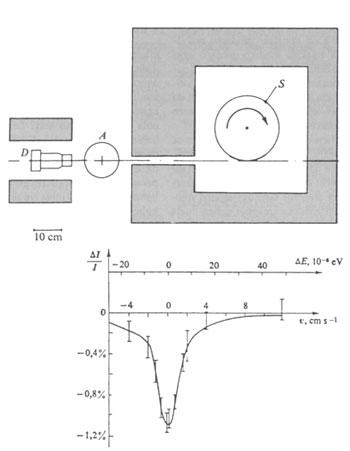Pamplona, meeting point for Basque university students
1988/10/01 Oilarra, A. Iturria: Elhuyar aldizkaria
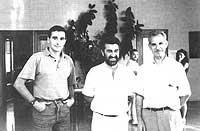
At the end of July, the Basque Summer University was once again the meeting point for university students. More than 560 people have gathered around the 22 courses held at Larraona School, of which 130 have been teachers. In these twenty-one courses there was something new. First, a course of medicine has been held that has not been possible for several years and that although it has been shorter than initially thought, has not lost interest in it. On the other hand, a new course on teaching languages was taught.
The balance sheet should be considered a positive average. From the academic point of view it has been so. The classes given and the seminars carried out have been of good level and interest. Also, the participation of the students and the attention paid. The largest black cloud is an economic problem that endangers the future of the EU. We hope and wish this to be solved.
In the following pages you will find some brushstrokes of what has been done in the field of science.
Spectroscopy with Manu BarandiarenaWithin the UEU Department of Physics you have talked about Mössbauer spectroscopy. What is Mössbauer spectroscopy?The first thing we have to see is the effect of Mössbauer. It is a resonant absorption at the nuclear level. It is a very special effect, easy to measure and of great precision. Mössbauer spectroscopy measures this nuclear absorption. This technique measures phenomena that cannot be measured otherwise. It only appears in some special nuclei like iron. Iron is very abundant and you can easily analyze it in metals, hemoglobin, ceramics, etc. And what does Mössbauer spectroscopy measure?You can measure three types of interactions. The first is the electronic environment, that is, the valence and the links. The second is the anisotropy or isotropy of a nucleus. Finally, you can measure magnetic effects: in ferromagnetic and anti-ferromagnetic materials, how much the inner magnetic field costs, what is the direction... And what practical uses do you have in normal life?You won't find Mössbauer spectroscopy as a refrigerator in your normal life. But I want to tell you: Why would they use spectroscope in a company?Research and analysis of all compounds containing mainly iron: In lunar soil research, in research of hemoglobins and proteins, in alloys... It is not expensive spectroscopy. For example, the spectrometer we have in Leila costs only 3,500,000 sts. It is very cheap compared to nuclear magnetic resonance imaging. And is it a simple or complicated technique when handling the device?It is not difficult. They are sufficient standard apparatus. The problem is that, as in any spectroscope, you must have a lot of data to make comparisons and a lot of tables. And the tables are expensive. On the other hand, in in-depth research you need a computer to make comparisons. Are other nuclei studied besides iron?The most widely used core is, of course, iron, as it is the most abundant of the nuclei available. Then enough tin, europium and dysplosium are used. It is possible to use teluro, iridium, Indian and others, but it is very rare. Thank you Manu. |
The karst to study
Geologist Felix Ugarte has spoken in the EU about the Karst, the karst group of Aralar. Felix; What is Karst?The word "karst" is of Yugoslavian origin. The karst is generated when the rock that appears on the ground is broken by the action of acids that drag rain. Acid-laden water, by dissolving limestone, adopts unique shapes forming spectacular landscapes: caves, springs, dolinas, lapiaces, etc. We call this set of forms and phenomena "Karst."
From what point of view have you analyzed the Karst?Karst can be analyzed from multiple perspectives. On the one hand we have the studies of Hydrogeology: Inside the karst, especially when the coves are abundant, water accumulates that it is interesting to analyze where it enters, where it leaves. Another point of view for the study of karsts is geomorphology. He studies the forms of Karst and analyzes the evolution they have suffered from the quaternary to the present day (2,000,000).
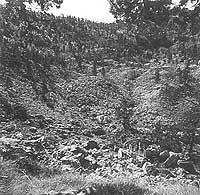
grow between rocks and beeches where there is more land.
The karst group of Aralar has no big differences with those we can find in Aizkorri-Aloña or Gorbeia. Noteworthy is the wide variety of caleras that we can find in Aralar. In Aizkorri-Aloña, for example, while in the Cretaceous there are limestones, besides those of Aralar, we also find Jurassic. On the other hand, considering the presence of lime (that is, the surface in square kilometers), that of Aralar is much more important.
Are there other karstis in Euskal Herria?There are more important karst in Euskal Herria, for example, in the Pyrenees of Navarra we have Larra. The geomorphology or shape of the latter is different because of its height (about 2,000 meters).
Karst can play an important role as an aquifer. Are you going to explain something about this?Well, my research topics are not primarily aquifers or aquifers. Most of my research has been done on geomorphology. However, it must be said that the aquifers in Euskal Herria are not very important, since they do not have much water. Its geological structure is not suitable for accumulating large amounts of water and the most important aquifers or aquifers are, on the one hand, Larra (in the Navarre Pyrenees, with fountains mainly in Zuberoa) and, on the other, Urbasa and Andia.
You made a practical exit to Aralar. What have you analyzed?In order to see what was presented in the classroom in practicality, some students and teachers went to Aralar. Aralar has two distinct zones: Cantabrian slope, that is, part of Araitz, Malloas, etc. On the other hand, we have the Mediterranean side, which covers most of Navarre. At the exit they visited the Cantabrian area, where the reliefs and forms provoked in the Quaternary were observed. The remains of the movement processes that occurred in the Quaternary were analyzed, that is, the deposits (mainly moraines), the colluvions and the most important remains of the Cold. In addition to the pens that are in the area and that are witnesses of the Cold, in this practical journey we saw and analyzed the sediments that are in the high of Azkarate, Bedaio, Amezketa and Larraitz.
CAD-CAM Jabier Barañano works in Sondika's North Die Cutting and within the Physics Section has spoken of CAD-CAM, computer-aided design and manufacturing. What is the situation of CAD-CAM in Euskal Herria?The CAD-CAM has two parts. The MRP programs included in the CAM area are mature enough and are especially integrated into larger companies and sufficient to produce cheaper. About CAD, computer-aided design, there are many things and it has been introduced a little, especially in die cutting. We can't think that it's going to get a lot in a short time, but as long as the design of our products allows us to do better, we'll assume that it's going to go up more. In Euskal Herria there are many CAM programs. I think they don't use all their possibilities well. Are CAD programs designed in Euskal Herria or purchased from outside?The programs are brought from outside, but they are used here to make designs and in the company in which I work, for example, we have a system of one hundred million and much is used, almost all parts. We use all the parts we manufacture for cars and planes, but this is a special case and normally conventional companies use the autoCAD or CAD program for any personal computer. They are very easy to use and smaller capacity. |
Analysis of the theory of evolution
With us we have Garikoitz Esnaola. He has worked in the Department of Natural Sciences and together with Jesus Mari Txurruka has presented some videos about evolution. What has been your goal presenting these videos and what has been your work?First, make this series of videos known to students or people who have attended it, starting with the objectives. Overall, the program is pretty good. Secondly, it is a work that brings a global view of evolution. And third, the goal has been to generate debate, formulate or analyze some key questions.
Have you drawn conclusions in this forum?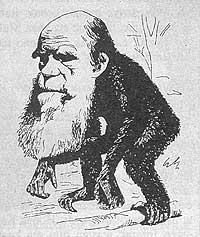
Given the depth and extent of the topic, it is not possible to draw new conclusions. We have not shown anything new. However J.M. The churruca has explained some more modern schemes to trace a phylogeny between vertebrates and relate them to each other.
And the theory of evolution was formulated by Darwin. What is the formulation given by Darwin and the current vision?
I think we should differentiate levels about this problem. The concerns that arose when Darwin raised evolution at the time (for example, about the origin of human beings) can still be problematic at what social level and to what extent. Darwinism is quite assimilated scientifically and, of course, has had amendments. The current called neodarwinism is there. After Darwin raised the theory, the appearance of genetics has influenced the theory of evolution. Instead of applying evolution to the individual to the population, such improvements have led to neo-Darwinism, the main current evolutionary current.
Well, and going on to another topic and taking this course, would you make an assessment?Well, in some respects it has been a success. Many people have come, more than in recent years. The participation of geologists has been very high, both as listeners and teachers. And that is interesting, because the Natural Sciences are not only worked by biologists.
Thank you.
Desire to meet the little one
Txema Pitarke, within the Physics section, has talked about the effect tunnel microscope. What is that effective tunnel microscope in a nutshell?It is called a microscope because it is used for surface observation and the effect tunnel has its operation taking advantage of the quantum effect of the tunnel. The proximity of two months causes electrons to pass from one metal to another through this quantum tunnel. This allows somehow to capture the surface structure of one of the metals and explain how this is achieved would be too long.
Therefore, is the effect tunnel microscope used only for surface explanation or has other uses?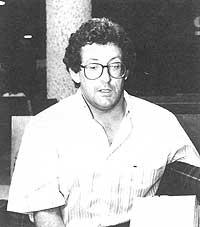
Well. Not only for that. The first surfaces have been analyzed, but it is also used to publicize fundamental physical processes such as electronic properties and the interconnection between electrons and surfaces. That is the field I know the most.
Do you mean that you work with this tool?No. I work theoretically on the theory of this microscope.
And at the University of the Basque Country or in Euskal Herria do we have this type of microscopes?No. In Madrid he is at the Autonomous University and I have seen him, but I have never worked with one of those.
Isn't it curious to do your theoretical work without microscopy here?No. The experimental works in this regard are published in international journals and we handle those experimental data to carry out our work.
If I'm not mistaken, three or four years ago the inventors received the Nobel prize when this microscope came out, right?Yes, in 86. Two years ago. Binning and Polannyi won. It is a very new and revolutionary technique.
Thank you.Informatics and Law working togetherThe departments of Informatics and Law worked together on the topic "Informatics and Law". From the hand of Xanti Goñi, professor and lawyer of the Faculty of Law of San Sebastian and of the professors of the Faculty of Informatics, Xabier Arregi and Ibon Zipitria, the points of dialogue between the two were analyzed. The idea of analyzing this issue arose from the Department of Informatics when the Department of Law was proposed to analyze the issue of computer crime. However, seeing that it was not enough to limit itself to this issue and that computer science and law had many more common issues, in the delivered class possible interference of computer law (in the organization of offices, in the election and organization of trials, if in the field of legal logic there are decision-making procedures supported by expert systems) and computer crimes, among others. Thus, computer scientists Xabier Agirre and Ibon Zipitria presented a presentation in which they comment on their influence in the world of law. Xanti Goñi then explained what contributions computing could provide in criminal, civil and political law. In the field of legal logic, the speakers demonstrated that the role of computer science was not to eliminate the role of the person. Xanti Goñi pointed out that "in the world of law there is such a well-known principle that two and two are not four. If not, it would not be Law, but Mathematics. It is therefore a question of obtaining a series of instruments that allow us to see if the legal systems are coherent, contrary, valid and facilitate their analysis and interpretation. These studies are addressed in this sense and, in addition, they are still only analyzed in the higher university level. They are not put into practice in law, but at the research level. In the class it was stated that some concrete legal decisions are very limited and channeled. The work of judges is limited to giving a concrete decision in view of certain conditions, in which there may be possibility, without replacing the decision of the person, to create computerized systems that can help to make judicial decisions faster and more logical. |

Gai honi buruzko eduki gehiago
Elhuyarrek garatutako teknologia




